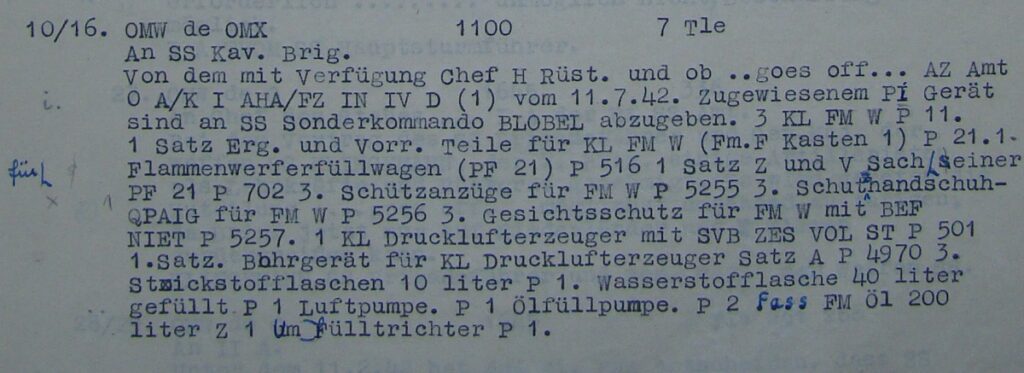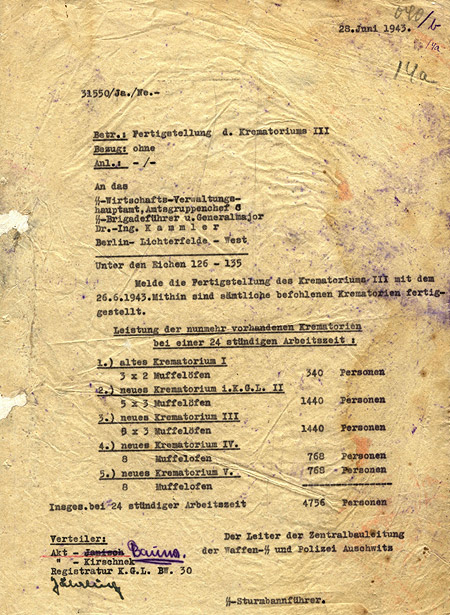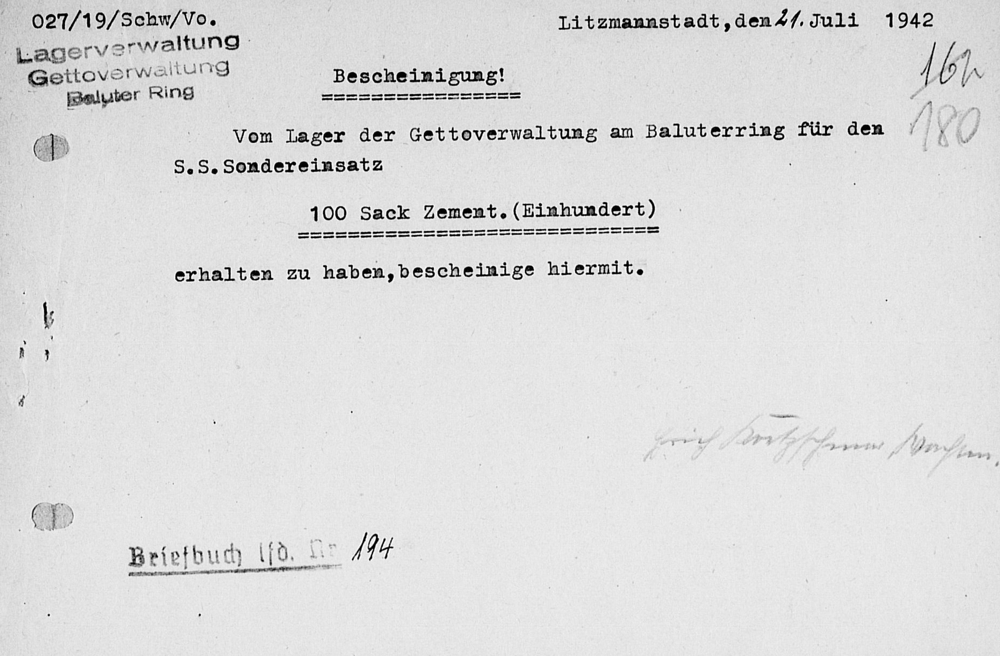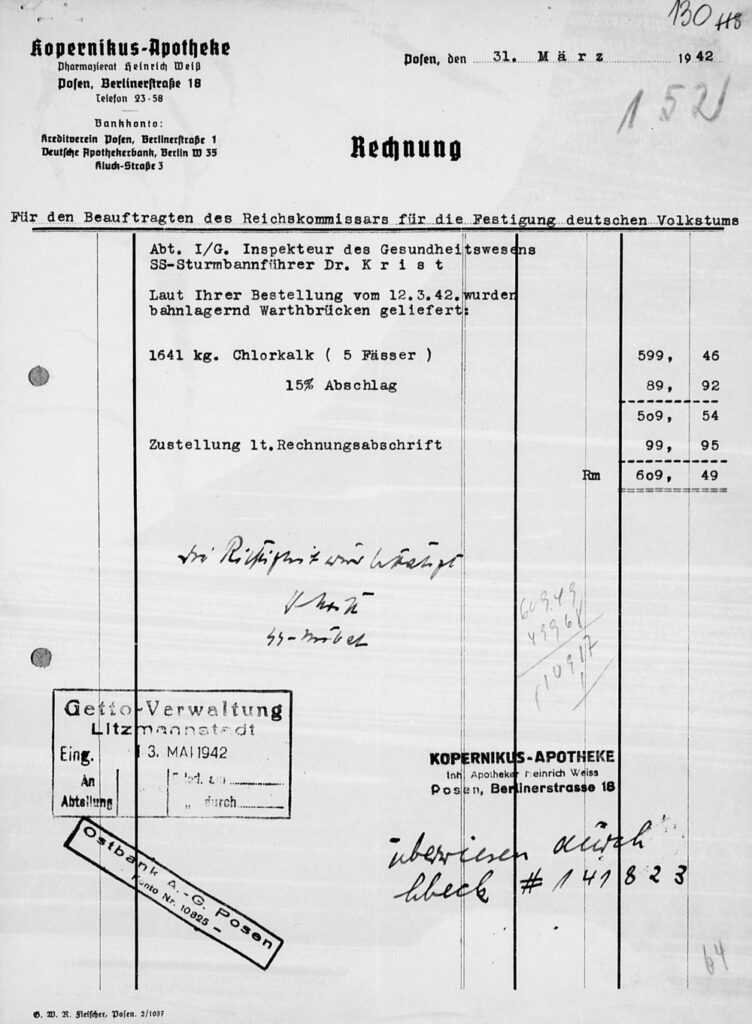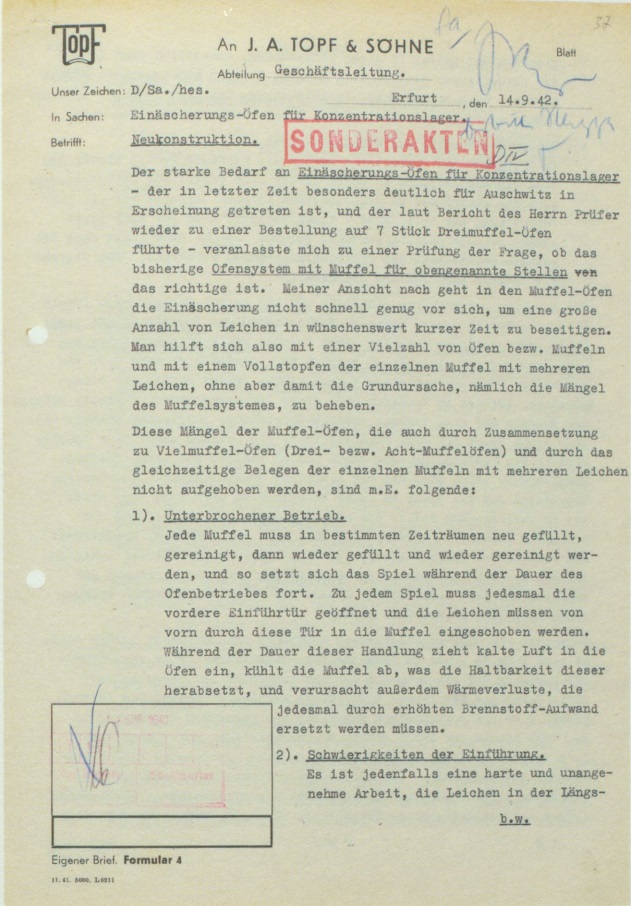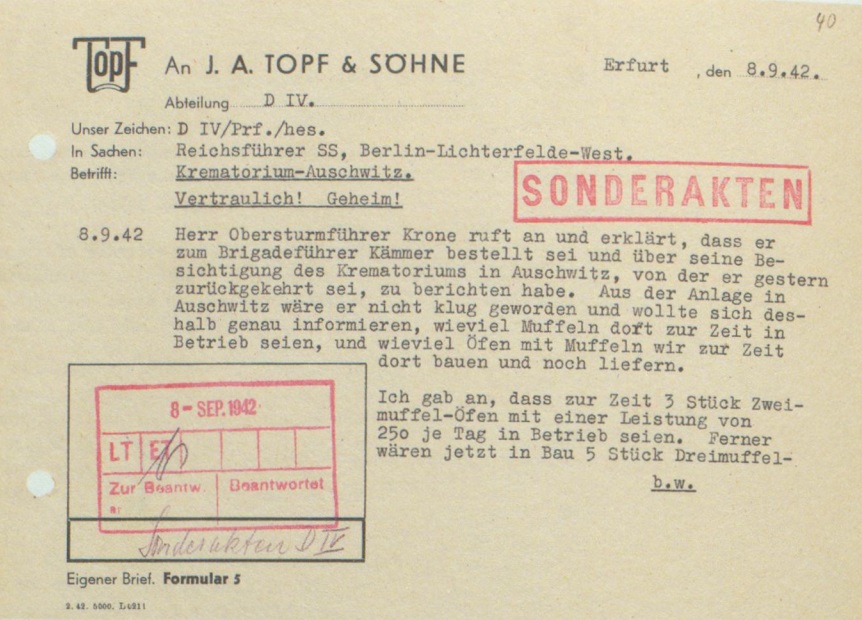1942-07-15 Flamethrower Requested by Blobel for Mass Grave Disposal Trials at Chełmno Extermination Camp
On 15 July 1942, SS-Obersturmbannführer Ernst Fick, commander of the Sennheim training camp, requested a portable flamethrower unit from the SS Cavalry Brigade at the Waffen-SS training camp in Dębica to be provided to SS-Standartenführer Paul Blobel’s Sonderkommando 1005. Blobel subsequently tested the effectiveness of the flamethrower for corpse disposal at the Chełmno/Kulmhof extermination camp.
